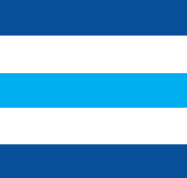You’ve worked hard to understand the Affordable Care Act and to ensure that your company is compliant. You take time selecting the best plans to offer employees, you manage informative open enrollment sessions, and you file your 1094-C and 1095-C forms. Therefore, you’re taken completely off-guard when you receive a “ACA Subsidy Notice” from the Health Insurance Marketplace notifying you that your company may face penalties for non-compliance.
What are ACA subsidy notices?
They are letters written to inform an employer that one of its employees has qualified for a Health Insurance Marketplace subsidy. If it is found that the employer has not made adequate health insurance available, the IRS may require an employer shared responsibility payment.
However, receiving a letter is not the same as receiving a penalty. Several situations can lead to the issuance of a subsidy notice, and they are not all indicators of a problem. Below are several examples which could prompt a letter, which may or may not result in a penalty:
- The company is not required to provide insurance. Applicable Large Employers, or ALEs, are required to provide health insurance that meets to the minimum requirements set by the ACA. ALEs have 50 or more full-time employees, including full-time equivalent employees. If your company is not an ALE, the ACA employer shared responsibility provisions do not apply.
- The employer is an ALE and provides health insurance, but the employee in question is not eligible. This could be because the employee is a part-time worker or because the employee has been hired recently and is in a waiting period before becoming eligible for employer-sponsored health benefits. Part-time employees are defined as employees who work less than 30 hours per week or 130 hours per month, and waiting periods are permissible as long as they do not last more than 90 days.
- The employee made a mistake. It’s possible that the employee declined employer-sponsored health insurance or was unaware of its availability. If this employee then applied for a Marketplace subsidy and reported not receiving adequate insurance through work, a letter is likely.
- The employer is an ALE and provides health insurance, but it does not meet the minimum criteria. The employer-sponsored health insurance must provide minimum essential coverage that is affordable and provides minimum value. In this case, a penalty should be expected.
- The employer is an ALE but does not provide health insurance. ALEs are required to provide insurance to at least 95 percent of full-time employees. If the employer fails to meet this requirement, it should expect a penalty.
If you believe that you have received a subsidy notice in error, you can file an appeal with the Health Insurance Marketplace. The appeal must be made within 90 days. The Marketplace will notify you of the decision, but it is important to note that the IRS, not the Marketplace, charges penalties. If the IRS finds that your company owes an employer shared responsibility fee, it will calculate the amount and send a letter informing you of this.
In the end, subsidy notices from the Health Insurance Marketplace do not necessarily require action – or panic – from the employer. Letters from the IRS demanding payment should be treated more urgently. Need help administering your benefits? iTEDIUM helps you track FTEs as well as benefit availability and affordability.



